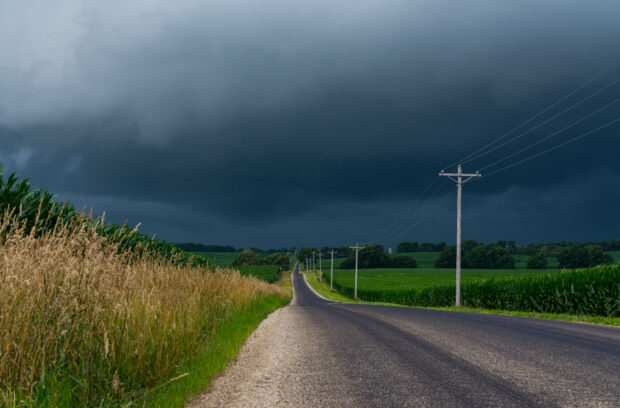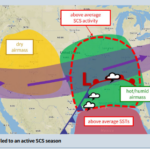Just a few weeks after unofficially announcing that a new catastrophe model was in the works, Aon officially announced the launch of a model to analyze U.S. Severe Convective Storms this week.
Paul Shedden, Head of Global Analytics– insurance and reinsurance at Aon, gave the sneak preview during a virtual renewal season briefing in advance of the Rendez-Vous de Septembre, stating that Aon put developed significant research “to address a specific problem that was in the market that we didn’t feel the current vendors were addressing.”
“It was particularly problematic for our clients,” he said, noting that U.S. SCS losses accounted for 60 percent of global natural catastrophe losses in the first half of the year. “We responded by building a model.”
According to a media statement, the model now launched by Aon’s Impact Forecasting team captures a full spectrum of event severities—including high frequency $1-$5 billion industry loss events, “smaller events that do not appear in the historical record, and realistic tail losses from derechos and other significant SCS hazards.”
A complete 20-year historical event set is also available in the model to allow companies to validate modeled industry losses, and to analyze historical events based on their current portfolios for better reinsurance decision-making. By comparing modeled historical losses to claims experience, insurers and reinsurers can get a more informed view of risk.
The model blends updated observational data sets with the latest natural hazard science to produce a comprehensive view of SCS risk, Aon said, going on to list these features:
- Average annual loss and low return-period aggregate loss estimates that more accurately represent trended client experience.
- Full capture of all SCS sub-perils and appropriate geographic distribution in modeling to allow for a more accurate view of tail risk.
- A “ground-up” component-based vulnerability framework that explicitly accounts for the cost, resistance and potential damage to different parts of the structure.
- An open, transparent, and customizable loss modeling platform with vulnerability curves that can be refined to best reflect clients’ unique claims experience and loss histories for a custom view of risk.
Adam Podlaha, CEO of Impact Forecasting, said: “The industry has faced many challenges when attempting to model severe convective storms, especially in terms of producing accurate average annual loss estimates.”
He added that Aon’s model provides an in-depth view of the risks associated with hail, thunderstorm-produced winds and tornadoes, “which in turn will help to shape better strategic decisions around portfolio management for this very costly peril.”
Source: Aon





















 Viewpoint: Mapping Evolving Regulatory Terrain for MGAs, MGUs and Other DUAEs
Viewpoint: Mapping Evolving Regulatory Terrain for MGAs, MGUs and Other DUAEs  The Hardest Part of Innovation in Insurance Isn’t Technology; It’s Culture
The Hardest Part of Innovation in Insurance Isn’t Technology; It’s Culture  Examining 5 Key Factors Fueling MGA Growth—and Emerging Challenges Ahead
Examining 5 Key Factors Fueling MGA Growth—and Emerging Challenges Ahead  Legal Finance and Insurance: From Confusion to Collaboration
Legal Finance and Insurance: From Confusion to Collaboration 




